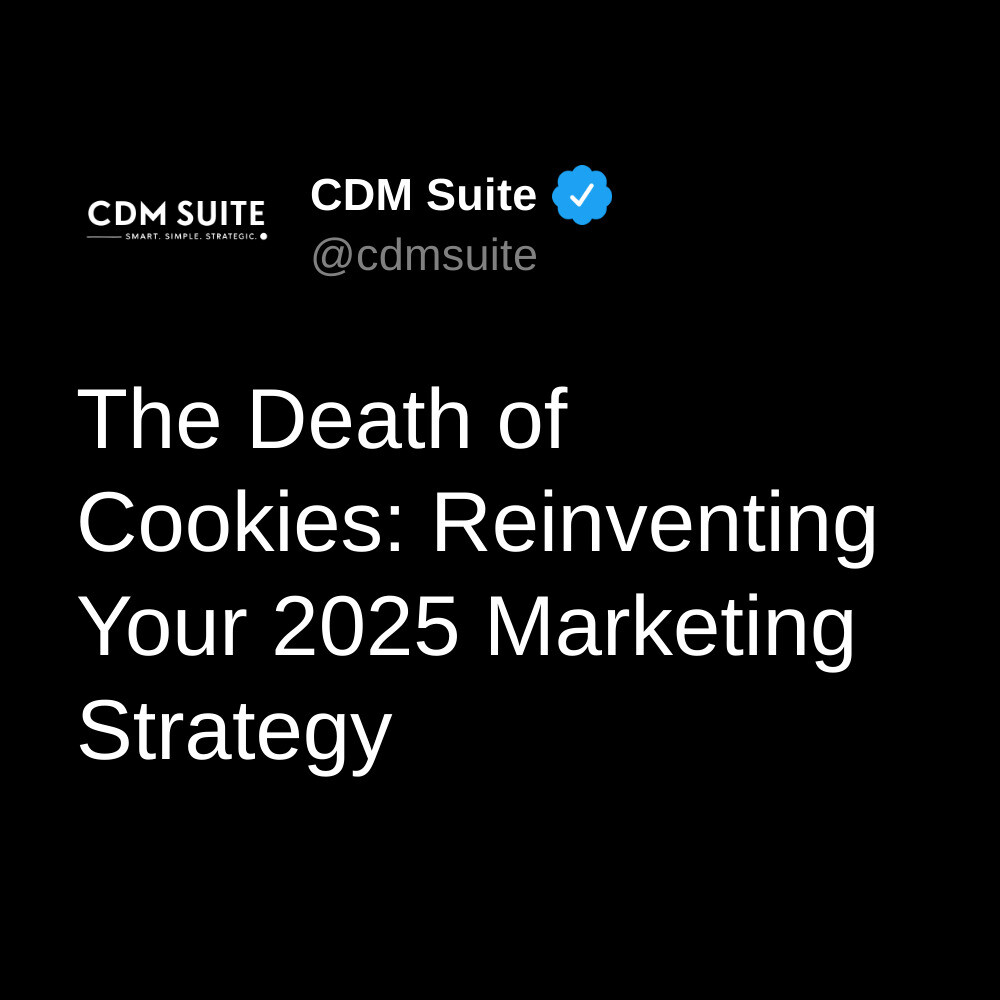The Death of Cookies: Reinventing Your 2025 Marketing Strategy
In the ever-evolving world of digital marketing, a seismic shift is underway. The death knell for third-party cookies has finally sounded, and marketers are scrambling to adapt. As of 2025, the landscape has changed dramatically, leaving many wondering: what does this mean for your marketing strategy?
Imagine waking up one day to find that the tools you’ve relied on for years to track, target, and retarget your audience have suddenly vanished. That’s the reality facing marketers today. The demise of third-party cookies isn’t just a minor inconvenience—it’s a fundamental transformation of how we approach digital advertising and user privacy.
But fear not! While this change presents significant challenges, it also opens up new opportunities for innovative marketers willing to adapt. Let’s dive into what the cookie-less future means for your marketing efforts and how you can not just survive, but thrive in this new era.
The Cookie Crumbles: Understanding the Impact
The phasing out of third-party cookies has far-reaching implications for digital marketing:
1. Reduced Tracking Capabilities
Without third-party cookies, tracking user behavior across different websites becomes significantly more challenging. This means less detailed information about your audience’s online activities outside your own domain.
2. Limited Retargeting Options
Those ads that follow users around the internet after they’ve visited your site? They’re becoming a thing of the past. Retargeting capabilities will be severely limited, forcing marketers to rethink their strategies for re-engaging potential customers.
3. Personalization Hurdles
Delivering highly personalized experiences based on a user’s browsing history across multiple sites will be much more difficult. This could lead to less effective ad targeting and potentially lower conversion rates.
4. Attribution Challenges
Measuring the effectiveness of your marketing campaigns and attributing conversions to specific touchpoints will become more complex. This could impact your ability to accurately assess ROI and optimize your marketing spend.
Adapting to the Cookie-less World: Strategies for Success
While the loss of third-party cookies presents challenges, it also creates opportunities for marketers to innovate and build stronger, more trust-based relationships with their audiences. Here are some strategies to help you navigate this new landscape:
1. Embrace First-Party Data
With third-party data becoming less reliable, first-party data is more valuable than ever. Focus on collecting data directly from your audience through:
- Email newsletters
- Gated content offers
- Customer surveys
- Account registrations
- Purchase history
By leveraging this data, you can create more personalized experiences without relying on third-party cookies.
2. Invest in Contextual Advertising
As behavioral targeting becomes more challenging, contextual advertising is making a comeback. This approach focuses on placing ads based on the content of the webpage rather than user behavior. It’s privacy-friendly and can be highly effective when done right.
3. Explore Alternative Targeting Methods
Look into new technologies and approaches for audience targeting:
- Google’s Privacy Sandbox initiatives
- Federated Learning of Cohorts (FLoC)
- Interest-based advertising within individual platforms
While these may not offer the same level of granularity as third-party cookies, they can still provide valuable targeting capabilities.
4. Focus on Building Direct Relationships
With less ability to track users across the web, building direct relationships with your audience becomes crucial. Invest in:
- Content marketing to attract and engage your target audience
- Community building through social media and forums
- Loyalty programs to incentivize repeat interactions
5. Leverage Walled Gardens
While the open web becomes more challenging to navigate, closed ecosystems like social media platforms and premium publishers still offer robust targeting options. Consider allocating more of your budget to these ‘walled gardens’ where user data is still accessible within the platform.
6. Prioritize Privacy and Transparency
As privacy concerns drive these changes, make sure your marketing practices align with evolving expectations:
- Be transparent about how you collect and use data
- Offer clear opt-in/opt-out options for data collection
- Communicate the value exchange for sharing information
By prioritizing privacy, you can build trust with your audience and potentially gain a competitive advantage.
The Silver Lining: Opportunities in the Cookie-less Future
While the death of third-party cookies presents challenges, it also offers opportunities for forward-thinking marketers:
- Improved User Trust: By respecting privacy and being transparent about data usage, you can build stronger relationships with your audience.
- Focus on Quality Content: With less reliance on targeted ads, there’s a renewed emphasis on creating valuable, engaging content that naturally attracts your target audience.
- Innovation in Marketing Tech: This shift is driving the development of new, privacy-friendly marketing technologies, potentially leading to more effective tools in the long run.
- Level Playing Field: The loss of third-party data could level the playing field for smaller businesses, as large corporations lose some of their data advantages.
Conclusion: Embracing the Change
The death of third-party cookies marks the end of an era in digital marketing, but it’s far from the end of effective digital advertising. By adapting your strategies, focusing on first-party data, and prioritizing user privacy, you can navigate this new landscape successfully.
Remember, change often brings opportunity. Those who adapt quickly and innovate in the face of these challenges will be best positioned to thrive in the cookie-less future.
Are you ready to revolutionize your marketing strategy for the post-cookie world? Don’t navigate these changes alone. Find out EXACTLY what’s missing in your marketing strategy with our free 3-minute marketing assessment. Get a custom growth plan tailored to your business in this new era of digital marketing. Don’t just survive the cookie apocalypse—thrive in it!



